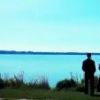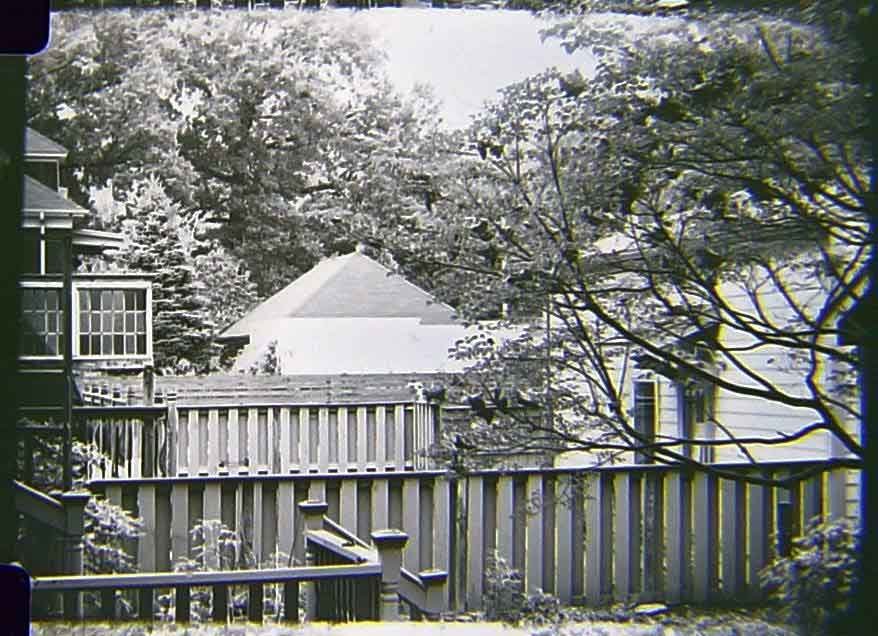-
Posts
141 -
Joined
-
Last visited
Posts posted by Timothy Fransky
-
-
This is an entirely different topic, but the dramatic use of looking into the lens can be drawn in a straight line back to Shakespeare's "aside," in which a character will address the audience directly or indirectly. In cinema, Chaplin was the earliest master of this. The Tramp was always winking at the audience via the lens. He would set up gags that way. Again, this is a theatrical device that's been adapted for the cinema. It's always surprising to me that the language of theatre is so unknown to the film community. Sure, film has developed a language of its own, but it's roots are firmly in the theatre. Much like rock 'n roll could not exist without the blues.
-
David, I'd have to respond with another question: why wouldn't you want an actor to look into the lens in these scenes?
It's also not clear if you're asking a question about directing the scene or shooting the scene. Those have two different answers.
The first is a storytelling question; the latter is a technical one.
-
Acting was pretty awful too. It was like a bunch of actors got together to exercise their craft, but without real purpose or motivation.
I'd agree with this. I would say it was the writing and direction. It felt like most of the student work from when I was in theatre school. Like they'd read "Long Day's Journey Into Night" by Eugene O'Neill and thought they could do the same.
Dom mentioned David Mamet, but I don't find his plays stiff. I agree the writing here turned boilerplate and theatrical in the worst sense. One character tells a long, meandering story with extremely obvious symbolism, then the next character does, then the next. None of them really meet anywhere.
The redhead ghost made no sense whatsoever. Neither did the house, for that matter. I didn't understand what it actually was or did. It seemed like they wanted to riff on "The Shining," but got lost up their own buttholes.
-
I shot a test with an old Pan Cinor zoom on my BMCC and got some significant chromatic aberration out around the edges of the image:
I think you're looking for that "Coke bottle" effect.
I really like this.
-
 1
1
-
-
Very nicely shot and graded series. A trifle too dark in some scenes. I wanted to wipe off the screen to see it better. Many dramas are done this way lately so w/e.
The writing was interesting right up till the end. Then it turned maudlin and hammy. It also felt rushed, like they wrote it last minute.
-
Jesus. I'm like a nostalgia wizard.
-
US orders are through orwona.com. Drop them a line, you never know
-
That's a lot of info! Great stuff!
I initially bought the Cokin system for my super 8 camera, which has a diameter of 55mm.
The ideal option would be to adapt these filters to the 16mm camera, so I wouldn't have to buy multiple sets.
I would just as soon not fart around looking for 60 year old filters. I'm more interested in shooting than collecting.
I will be shooting negative stock and scanning, so it doesn't really matter if I have to colour correct in post.
I just prefer to do as much in camera/on set as possible. It's how I was taught to work in the theatre.
And filters are very helpful to get a good exposure. There's only so much you can do with a garbage shot.
-
I use anything to print on. They call this intermediate film. I wish I could buy print film this way.
The Liason of Independent Filmmakers of Toronto has a store that stocks Orwo PF2 for a remarkably low price. If you're looking for b&w print film, that might be an option.
-
So it looks like the venerable Doctor Who has gotten on the Alexa anamorphic bandwagon. They're using Cooke Anamorphic/i and Alexa XT and Alex Mini. I think it looks great so far.
I love Doctor Who, so I'm down for whatever. There were some really pretty octagonal flares in Sunday's episode, particularly when the TARDIS arrived.
-
Took some measurements on both the 20mm Super Comat lens and the 2.5".
The retaining rings' lip isn't wide enough for the stamp, so they're probably still series 4.5, just a later version.
The 20 measures 28.44mm on the retaining ring, according to my digital calipers.
The 2.8" is 34.37.
Any help is welcome. These seem like oddball numbers to me.
-
That story was made into the wonderful 2005 film Joyeux Noel.
And it only happened in 1914, I believe, at least on that level. There are stories of it happening later on in the war in smaller pockets of the Western front. Things definitely changed after Spring 1915, when poison gas was first deployed. The gloves came off after that.
That said, there were many individuals who still considered the morality of the whole thing, even into the mud of Passchendaele. There are photos that show both sides assisting with the wounded, regardless of uniform or rank. If you could keep a man alive, or even ease his suffering, some felt it was their Christian duty to do so.
Others still took the opposite approach. Many companies took no prisoners. I'm ashamed to say my own nation was notorious for this. And not just in the heat of the heavy fighting. A boy slumped over a gun carriage would raise an arm and be rewarded with a round of 303 through his skull. "You never know if he was going to start shooting again," was the justification.
Indeed, your own countrymen used their own rotting dead to build parapets against the Turkish fire at Gallipoli. They had nothing else to protect themselves
So, we must be very careful not to romanticize that conflict. There's plenty of horror and honour to go around, but it's all disconnected. There's no one statement or battle that fully encapsulates it. It's a rabbit warren of dead ends and dud shells.
-
I'm very much looking forward to this film. I'm fascinated by the Great War. We still feel the effects of that conflict.
-
Awesome! Thanks!
-
I've been puzzling away about filter sizes for these lenses and I finally noticed the one in the manual is stamped "Size 4.5." What filter system is that?
I was assuming/hoping the diameter would be 39mm, so I could use the Cokin system.
-
-
I need to test my new B&H 627. I'm just seeing what's out there for cheap short ends/recans/expired 16mm. One or two perf, doesn't matter. I'll even consider R8. Operative word is "cheap." Quality is less important as I'm just testing the camera.
-
So to update, I stumbled over the Cokin system, which is perfect for these simple mask effects. Fits my s8 and 16mm cameras perfectly.
The only filter I don't see available is a moveable iris. The diy options are all too large.
I was poking around and wondered if any of these would work with slight modification:
-
Wow. I hope I can print it as well on PF2. Thanks. Silver IS green. Selenium gets rid of it
You're welcome. That's just Photoshop's Invert function. Certainly gives me hope for my own experiments with this stock.
-
-
I have used a small CCTV lens with mine it's a Pentax 16mm lens.
Pav
What are the filter threads on these, 39mm?
-
Appreciated. I didn't realize there would be so much difference between 20mm and 25mm in the R16 format.
-
I'm taking suggestions for a good wide angle lens for my 627. It came with the standard 20mm sunomatic lens as well as a Taylor Hobson 2.5" tele. (I don't know what that would be in mm, but judging by the matching finder lens, it would appear to be a close-up lens.) Those are pretty standard focal lengths, but I'd like to have a wide option. I suppose I'd also have to find a matching finder lens. Thoughts?
-
I'm not sure how much of that was really a limitation of the technology, and how much a failure of technique. Spaceships are, as far as anything's easy in CGI, easy, especially in the context of a major motion picture. I think the problems with the way Insurrection's effects look have much more to do with creative decision making. Particularly, there's way too much fill light, which is incorrect for space, and a huge proportion of shots have purplish nebulae in the background. The whole thing lacks contrast and punch. Early effects artists on Star Trek films understood the need for space to be black and the lighting consequences of that, which is why early ships tend to have lots of spotlights aiming at themselves.
The motion sickness issue was mentioned in the context of the (awful) film Stealth, which used CG to represent atmospheric fighter jets. I'm sure I saw a very cautiously-worded interview somewhere to the effect that there was a directorial desire to have the camera flying madly around, which of course is unrestricted with CG, to the point where the entire thing was a mess of motion blur.
I was recently asked how I'd do fighter jet effects for a TV show, given the high standard of current TV shows, and my first reaction was to make models - large models, of course, perhaps sixth scale. A 1/6 MiG-29 would be about ten feet long. Some shots in Top Gun were done with miniatures often simply being thrown from a cherrypicker and caught in a net.
Radio-controlled models might be useful, but I suspect much of it could be done with static miniatures on a clifftop. The models would be expensive, but for anything not involving explosions you could more or less just shoot them with the second unit and end up much less restricted in the number and variety of shots. CG could be used where necessary to remove supports and add things like wingtip vortices, missiles coming off rails, and so on. In my view this sort of approach has historically led to much more convincing work.
P
Yeah, I don't understand the need make the camera whizz around a model in any context. It's unpleasantly disorienting. If you're going to do that to an audience, you'd better have a good reason. I suspect the main reason for doing it is directors' vanity. They want to be remembered for doing something "cool" with the camera. If it doesn't help tell the story, it's a distraction.
Besides which, I don't think that's anything like what a fighter pilot would experience in a dogfight in standard gravity, let alone zero gravity. There's a Discovery tv series from a few years back that documented RCAF 410 Squadron in Cold Lake, AB. They followed a full training course for a small class of fighter trainees. The camera work in the CF-18s was impressive. It was disorienting to be sure, but after awhile, you started to think in 360 degrees. This would be very instructive to any director or dp wanting to shoot flight in space or otherwise.





Characters looking into the lens
in General Discussion
Posted · Edited by Timothy Fransky
Forgive me, I believe I addressed the wrong person.
I meant to address my comment to the OP, who does appear to be unaware of these comic traditions, at least from my perspective.
It's really important, OP, to ask yourself who is looking. By which I mean, who is the lens? Who are the characters looking into the lens looking at?